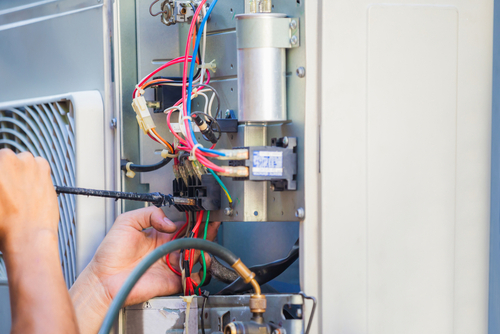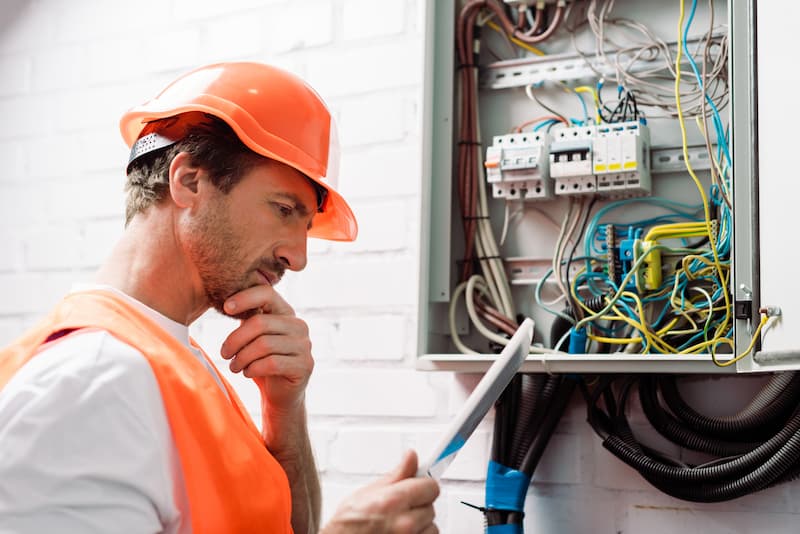Achieve adherence with dependable regulatory compliance assistance in all sectors.
Achieve adherence with dependable regulatory compliance assistance in all sectors.
Blog Article
Leading Tips for Effective Electric System Troubleshooting
Troubleshooting electric systems needs a systematic technique, based in an extensive understanding of electric concepts and security procedures. The subtleties of efficient fixing prolong past plain technical understanding; understanding exactly how to record findings and prioritize safety and security can significantly influence outcomes.
Understand the Fundamentals
Understanding the basics of electric systems is important for efficient troubleshooting, as a strong foundation enables service technicians to detect and fix issues extra efficiently. An extensive understanding of electric principles, such as voltage, current, resistance, and power, is crucial in determining the origin triggers of issues. Voltage is the electric prospective distinction that drives current through a circuit, while resistance opposes the flow of present, affecting the total performance of the system.
Knowledge with circuit elements, including resistors, capacitors, diodes, and switches, is likewise vital. Each component plays an unique function in circuit habits and can impact efficiency when malfunctioning. Additionally, recognizing series and identical circuit arrangements is vital, as these setups affect the distribution of voltage and existing within the system.
Furthermore, expertise of security procedures is important. Professionals need to recognize possible hazards, such as shock and brief circuits, to implement safe troubleshooting practices. By understanding these fundamental ideas, professionals boost their capability to carry out reliable diagnostics and repairs, inevitably leading to enhanced efficiency and integrity of electric systems. This foundational expertise is the cornerstone of successful fixing undertakings.
Gather Necessary Equipment
Efficient troubleshooting of electrical systems requires the ideal collection of tools to diagnose and deal with concerns accurately. A well-appointed specialist can dramatically improve efficiency and performance in recognizing troubles. Crucial tools consist of a multimeter, which determines voltage, present, and resistance, enabling precise evaluations of electric parts. Clamp meters are also valuable for gauging existing without disconnecting the circuit, making sure safety and convenience.
In addition, protected hand devices such as screwdrivers, pliers, and cable strippers are crucial for safely controling electrical connections. It is likewise advisable to have a circuit tester accessible to confirm the presence of voltage in electrical outlets and cables. For more facility systems, a thermal imaging electronic camera can assist spot overheating parts, indicating possible failures.

Adhere To a Systematic Approach
Having gathered the ideal tools, the following action in fixing electrical systems is to comply with a methodical strategy. A methodical approach makes sure that specialists can determine mistakes successfully and properly, lessening downtime and avoiding unneeded repair services.
Begin by assessing the system's schematic layouts and requirements. This includes checking each component methodically, starting from the power resource and working towards the load.
Make hop over to these guys use of testing tools, such as multimeters and oscilloscopes, to gather unbiased data regarding voltage, present, and resistance at various factors within the system. This empirical proof will direct your troubleshooting efforts and help to confirm or remove potential reasons for failing.
Additionally, consider environmental variables that might affect the system's efficiency, such as temperature changes or moisture access. An extensive examination of wiring, links, and elements will certainly make sure that all possibilities are made up.
File Your Findings
Detailed documentation is vital in the repairing procedure of electric systems. This practice not only aids in comprehending the origin reason of the trouble yet also offers as a reference for future repairing efforts.

In addition, keeping a log of components changed or repair services done is vital. This info supports supply administration and can aid evaluate the longevity and dependability of particular parts.
Inevitably, the paperwork procedure ought to be comprehensive yet succinct, allowing easy access and evaluation - electrical system troubleshooting. By focusing on detailed documents, professionals can produce a valuable data base that not only help in current troubleshooting yet also encourages future maintenance initiatives, thereby improving general system integrity

Prioritize Precaution
Identifying the integral risks connected with electrical systems is vital for guaranteeing security throughout troubleshooting. Electrical shock, burns, and equipment damage are simply a few of the potential risks that specialists encounter. Prioritizing precaution is not only a lawful commitment but likewise a moral imperative that safeguards both the specialist and the surrounding setting.
Prior to commencing any troubleshooting task, service technicians need to put on appropriate personal protective devices (PPE), including protected handwear covers, shatterproof glass, and flame-resistant clothes. Ensuring that the workplace is completely dry and free of clutter can substantially decrease the danger of mishaps. In addition, it is important to de-energize circuits before beginning any type of job, confirming that they are not endure the use of a multimeter or voltage tester.
Developing clear interaction methods with staff member is additionally essential; this makes certain that every person recognizes prospective risks and the condition here are the findings of the electrical system being worked on. Lastly, having an emergency response plan in position can prove indispensable in case of an incident. By focusing on precaution, specialists can efficiently minimize dangers and promote a much safer work environment.
Conclusion
Reliable electrical system fixing counts on a comprehensive understanding of fundamental principles and a systematic approach. Prioritizing security actions ensures the wellness of people entailed and the stability web of the electric system.
Report this page